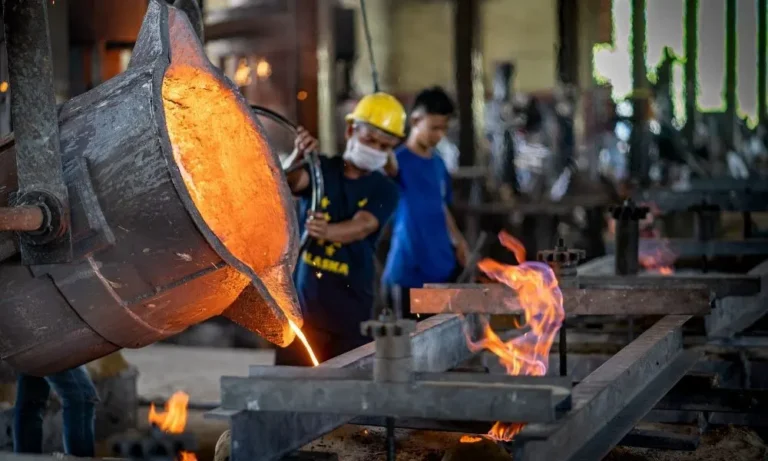You might think that only pros should be able to do this, but don’t worry! Anyone can start machining if they know what to do.
Think about how you could make easy things strong and pretty. These things are classy and will last a long time.
This guide will teach you how to become a master at casting stainless steel. It doesn’t matter if you want to make unique models for fun or if you want to get better at what you do for a living. Get ready to use your thoughts to make things that really shine.
Techniques for Casting Stainless Steel
Now that we have a basic understanding of stainless steel, let’s explore the various techniques for casting it. There are several methods to consider in this process.
Investment Casting
In “lost-wax casting,” a detailed wax model is constructed and then layers of ceramic liquid are poured. An empty clay mold can be filled with molten steel when the wax melts.
Sand Casting
This method uses compacted sand and a binding agent to shape bigger items. The mold is filled with molten stainless steel and cooled to make the product.
Continuous Casting
As the name suggests, this technique involves continuously pouring molten stainless steel into a water-cooled mold. This process produces long, uniform shapes such as pipes or bars.
Centrifugal Casting
This method utilizes centrifugal force to evenly distribute molten stainless steel in a cylindrical mold. This process produces dense, high-quality castings with minimal defects.
Tips for Successful Casting
These techniques are effective, but there are a few tips to keep in mind. Following these tips will help ensure successful castings.
Proper Equipment
Make sure you have all the necessary investment casting solutions such as a furnace or kiln, safety gear, and casting tools. Proper preparation will help ensure a smooth and successful project.
Preparation is Key
Before starting the casting process, make sure all surfaces are clean and free of moisture. Any impurities can affect the quality of your final product. Taking the time to prepare properly will lead to better results and a smoother casting experience.
Temperature Control
Maintaining consistent temperatures during melting and pouring is crucial for achieving smooth, defect-free castings. This practice not only enhances the quality of the final product but also minimizes the risk of production errors.
Quality Materials
Use high-quality stainless steel alloys specifically designed for casting to ensure optimal results. These materials not only enhance durability but also improve the overall aesthetic of the final product.
Experimentation and Practice
Don’t be afraid to experiment and try different techniques, but remember that practice makes perfect. Start with smaller projects and work your way up to more complex ones.
Advancing Your Skills
As you gain confidence in your casting solutions, consider rapid prototyping as a valuable approach to test your designs before committing to full-scale production. This method allows you to create quick, functional models, helping you refine your designs and solve potential issues early in the process.
Mastering the Art of Casting Stainless Steel: Your Journey Awaits!
Casting stainless steel requires patience, precision, and a bit of creativity. Now that you have a better understanding of the techniques and tips involved, it’s time to roll up your sleeves and start creating!
Remember to always prioritize safety and don’t hesitate to seek guidance from experienced professionals. With dedication and practice, you’ll soon be able to produce stunning castings that will leave everyone in awe.
Does this article help you? Explore our website to find more helpful and fun stories that could help you.






